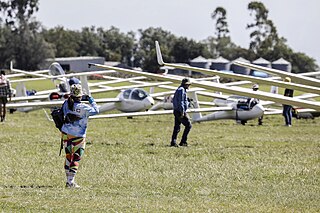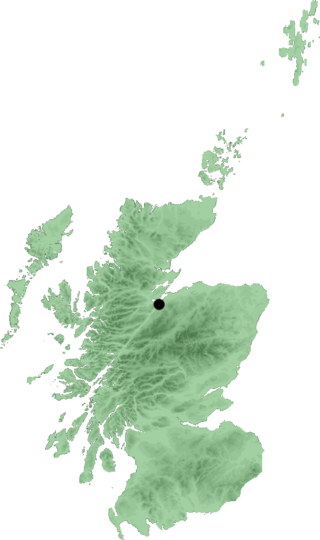
A private pilot licence (PPL) or private pilot certificate is a type of pilot licence that allows the holder to act as pilot in command of an aircraft privately. The basic licence requirements are determined by the International Civil Aviation Organization (ICAO), but implementation varies from country to country. According to ICAO, an applicant must be at least 17 years old, demonstrate appropriate knowledge and skill, and hold at least a Class 3 medical certificate. Different PPLs are available for different categories of aircraft, such as aeroplane, helicopter, airship, etc., and are not interchangeable, although experience from a PPL in one category may be credited towards the issue of another.
The airline transport pilot license (ATPL), or in the United States of America, an airline transport pilot (ATP) certificate, is the highest level of aircraft pilot certificate.
A commercial pilot licence (CPL) is a type of pilot licence that permits the holder to act as a pilot of an aircraft and be paid for their work.
Pilot licensing or certification refers to permits for operating aircraft. Flight crew licences are issued by the civil aviation authority of each country, which must establish that the holder has met minimum knowledge and experience before issuing licences. The licence, along with the required class or type rating, allows a pilot to fly aircraft registered in the licence issuing state.

Pilot certification in the United States is typically required for an individual to act as a pilot-in-command of an aircraft. It is regulated by the Federal Aviation Administration (FAA), a branch of the U.S. Department of Transportation (USDOT). A pilot may be certified under 14 Code of Federal Regulations (CFR) Part 61 or 14 CFR Part 141. Pilots may also be certified under 14 CFR Part 107 for commercial drone operations.
Pilot licensing in the United Kingdom is regulated by the Civil Aviation Authority (CAA).
The British Gliding Association (BGA) is the governing body for gliding in the United Kingdom. Gliding in the United Kingdom operates through 80 gliding clubs which have 2,310 gliders and 9,462 full flying members, though a further 17,000 people have gliding air-experience flights each year.

A flight instructor is a person who teaches others to operate aircraft. Specific privileges granted to holders of a flight instructor qualification vary from country to country, but very generally, a flight instructor serves to enhance or evaluate the knowledge and skill level of an aviator in pursuit of a higher pilot's license, certificate or rating.

The Gliding Federation of Australia, also known as Gliding Australia, is the governing body for the sport of gliding in Australia. It was founded in 1949. Gliding Australia is responsible to Civil Aviation Safety Authority for the conduct of safe gliding operations in Australia. This includes the setting and maintenance of flying standards and in particular training standards, for gliding and soaring flight in heavier-than-air fixed-wing gliders and sailplanes, powered sailplanes and touring motor gliders, but excluding flexible wing, weight shift hang gliders and paragliders.

A type rating is an authorization entered on or associated with a pilot license and forming part thereof, stating the pilot's privileges or limitations pertaining to certain aircraft type. Such qualification requires additional training beyond the scope of the initial license and aircraft class training.
Medical certifications for aircraft pilots are specified by the International Civil Aviation Organization (ICAO). ICAO sets standards and recommended practices (SARPS), which are specified in Annex 1 to the Convention on International Civil Aviation.

General aviation in the United Kingdom encompasses a variety of commercial and non-commercial aviation activities.

Gliding is a recreational activity and competitive air sport in which pilots fly unpowered aircraft known as gliders or sailplanes using naturally occurring currents of rising air in the atmosphere to remain airborne. The word soaring is also used for the sport.
The National Private Pilot Licence (NPPL) is a licence to fly United Kingdom registered aircraft within the United Kingdom. It is a more basic licence than the private pilot licence (PPL), and cannot be used to fly all aircraft. It can be used to fly basic aircraft such as vintage aircraft or kit-built aircraft. To fly many basic aircraft such as the Cessna 172, it is necessary to upgrade to at minimum a light aircraft pilot licence (LAPL).

Highland Aviation Training Ltd is an Approved Training Organisation at Inverness Airport. Highland Aviation offers flight training and aircraft maintenance, including Piper and Cessna Aeroplanes and Autogyro/Rotorsport Gyrocopters.
The light aircraft pilot licence (LAPL) is a pilot license allowing the pilot to fly small aircraft. It is issued in EASA member states and the United Kingdom. Unlike most other licences, it is not covered by the ICAO framework and is usually not able to be used in other states or regulatory areas.
Zbraslavice Airport is located 1,5 km North of the small city of Zbraslavice, near the main motorway nr. 126. between the city of Zbraslavice and Štipoklasy village in Central Bohemia. The airfield may be used by light aircraft, helicopters, gliders and ultralights. The keeper is civic society Aeroclub Zbraslavice. Zbraslavice airport is the synonym for superior gliding conditions among pilots and fans of aviation sports worldwide. Therefore, the airport is a place where a number of national and international competitions is held and a lot of pilots from the Czech Republic use the airfield as training base.
This is a glossary of acronyms, initialisms and terms used for gliding and soaring. This is a specialized subset of broader aviation, aerospace, and aeronautical terminology. Additional definitions can be found in the FAA Glider Flying Handbook.
An aircraft category is defined by the International Civil Aviation Organization as a "classification of aircraft according to specified basic characteristics", for the purpose of personnel licensing. Examples of aircraft categories include aeroplanes, helicopters, gliders, or free balloons.
Aviation in the European Union and the European Free Trade Association is regulated by the European Union Aviation Safety Agency (EASA). EASA specifies common standards for the licensing of aircraft pilots. EASA does not issue licences, rather licences are issued by member states. However, because the same standards are used, EASA licences are recognised by all member states.








